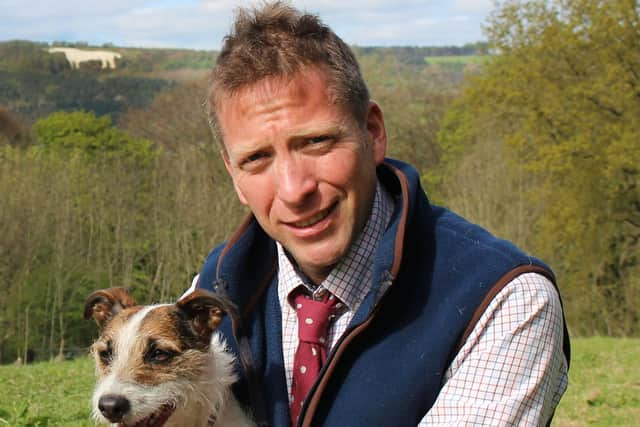The Yorkshire Vet: A day out at a viaduct with the bat man...
That’s what I’m technically called when I help with these VTs. In a veterinary context, VT means “ventricular tachycardia- a serious heart dysrhythmia. In the world of telly, it stands for “video tape” and means a short piece of film footage, to be inserted into another programme. For me, making a VT is full of challenges, especially in the presence of actual TV presenters like Jules Hudson, Helen Skelton et al. I’m much happier attempting to fix a case of ventricular tachycardia. When plunged into a world with several cameras and a director, I have to repeatedly apologise to the other contributors for my inadequacy as a presenter. Sometimes though, the subject is fascinating and I jump at the chance to spend a day with people passionate and knowledgeable about their interest, hobby or job.
This time, it was a VT all about bats. The flying mammal type. I didn’t know very much about these shy creatures, but I’m very interested in all wildlife, so I was really looking forward to learning more from an enthusiast. Bat man Rob, was the chap with whom I’d be working and posing questions. I met him, the filming crew and director for the day in a layby close to the woods and we all trouped off to start our bat survey.
Advertisement
Hide AdAdvertisement
Hide Ad“Surely, they’ll all be hibernating?” I asked, “And don’t they only come out at dusk?”


“Will we see any bats at all?”
But Rob had a plan which, he explained, was to investigate a viaduct using big torches and binoculars to find mini pipistrelle bats sleeping in the gaps between the large stone blocks that made up the piers and abutments. Rob explained that these little crevices made perfect places to hibernate for the bats. In warmer months, they could happily live in holes in trees, but as winter approached, the little creatures needed more shelter. We wouldn’t see any flying around, but hopefully we would see some sleeping behind an outstretched wing or maybe hanging upside down.
It was our job to search as closely as possible and count them. Counting them whilst asleep and stationary is much easier than if they are flying around. All the time, I was asking Rob questions about his work and its importance. This viaduct was one of the prime spots for pipistrelle bats to hibernate in winter, so it was a great place to be. When it’s warm, even in winter they can emerge to hunt for insects. Rob told me that the mating season occurs in autumn, but that conception doesn’t happen until after hibernation. The females have a special way of storing sperm during the winter.
After some searching, Rob found one crevice full of bat poo and a second with a curled-up pipistrelle in its deepest recess. With a keen eye, strong binoculars and a bright light, it was just possible to make out its form. With the TV cameras following me closely, I took a torch and started my own search. Relying on only my observational skills- and not my TV presenter ones- it wasn’t long before I found a dark shadow. Was it another pipistrelle? Had I discovered my very first bat in the wild or was it just a pile of faeces? I hoped I was correct or was I going bat-poo-crazy? Tune in to Winter on the Farm (coming soon) on Channel 5 to find out.